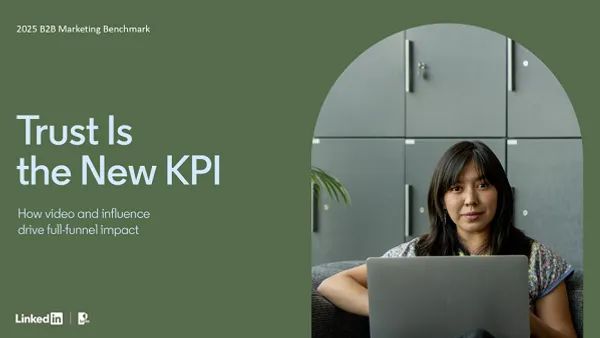Introduction: Why Brand Building Matters More Than Ever in B2B
In today’s competitive digital landscape, B2B companies can’t rely solely on traditional methods to reach decision-makers. Buyers are increasingly influenced by emotional engagement, peer recommendations, and creator content. That’s why LinkedIn B2B brand building tips now emphasize short-form video and influencer partnerships as essential tools for growth.
LinkedIn’s recent insights underline a clear shift: content that evokes trust, authenticity, and relevance outperforms conventional ads. Short-form videos and trusted voices can shape perception, spark conversation, and accelerate the B2B buying journey.
Short-Form Video: The New Standard for B2B Engagement
LinkedIn data reveals a dramatic surge in video consumption on the platform—especially short-form content. Year-over-year, video views have jumped 36%, and short-form clips are now shared 20 times more than static posts. These figures highlight the growing appetite for digestible, dynamic content.
This preference stems from how short videos deliver key messages quickly while keeping the viewer emotionally engaged. In the B2B world, this translates to faster brand recognition and higher trust. Whether it’s a product demo, thought leadership snippet, or event highlight, short videos offer instant value.
Influencer Marketing: Turning Trusted Voices into Growth Engines
The rise of B2B influencer marketing is no accident. Buyers are 87% more likely to trust a recommendation from an industry expert than from a brand ad. Moreover, 82% of B2B buyers say that content from credible creators influences their purchase decisions.
LinkedIn’s platform now supports an ecosystem of niche professionals—creators who speak directly to audiences in fields like tech, finance, and healthcare. By aligning with these voices, brands can reach prospects in a more authentic, targeted way.
Influencers do more than boost visibility. They help companies humanize their messaging, explain complex topics, and foster real engagement. As a result, they move prospects closer to conversion.
A Winning Combo: Integrating Video with Influencer Strategy
Forward-thinking B2B marketers are no longer choosing between video or influencers—they’re blending both for maximum effect. This hybrid strategy has shown to increase reach, engagement, and brand trust.
Recent LinkedIn studies show:
- 78% of top B2B marketers now use video
- 55% run ongoing influencer programs
- 56% plan to increase investment in both areas this year
These marketers report better performance across the funnel—from awareness to lead generation—when influencer messaging is paired with well-produced, informative videos.
New LinkedIn Tools to Amplify Brand Building
LinkedIn has introduced several features to help marketers scale video and influencer efforts effectively:
BrandLink
This new pre-roll video format allows brands to embed their message before influencer-created videos. Tests show it drives:
- 130% higher video completion rates
- 23% better view-through rates
- 18% more qualified leads
This tool offers brands an opportunity to connect with audiences while leveraging the credibility of the influencer’s content.
Thought Leader Ads
This format enables companies to boost organic posts from employees or creators. These sponsored posts blend into LinkedIn feeds naturally, offering strong engagement while maintaining an authentic tone. It’s ideal for C-suite leaders or in-house experts aiming to build their personal brand while advancing corporate goals.
How to Succeed with LinkedIn B2B Brand Building Tips
To get the most out of these strategies, brands must take a strategic, integrated approach. Here are some best practices:
1. Select Influencers with Real Authority
Go beyond follower counts. Choose influencers with deep industry knowledge and a track record of meaningful engagement. Their audience should align with your ideal customer profile.
2. Encourage Authentic Content
Allow creators to speak in their own voice. Scripted messages often fall flat. Let influencers shape the narrative in ways that resonate with their followers.
3. Diversify Your Video Formats
Don’t just post talking heads. Use behind-the-scenes tours, how-to guides, and expert Q&As. Short clips of events or customer testimonials also perform well.
4. Match Content to the Funnel
Awareness content might focus on thought leadership or market trends. Consideration content can include solution breakdowns or demos. For conversion, use testimonials or ROI proof points.
5. Leverage Data to Optimize
Monitor metrics like engagement rate, video completion, click-throughs, and lead quality. Use these insights to refine formats, messaging, and targeting over time.
Case in Point: How Top Brands Are Leading with Trust
Leading B2B brands like HubSpot, IBM, and Adobe have embraced this dual approach of video + influence. For example, some leverage internal subject-matter experts as influencers, while others collaborate with LinkedIn creators to host mini-series or trend breakdowns.
What unites these campaigns is the focus on storytelling, clarity, and audience-first messaging. Instead of pushing products, they foster connections—and the conversions follow.
Final Thoughts: Building for the Long Term
LinkedIn’s guidance is clear: in the B2B space, brand is no longer just a top-of-funnel play. It’s a strategic pillar that impacts every touchpoint. By following these LinkedIn B2B brand building tips, marketers can drive trust, engagement, and ultimately performance.
Short-form video and influencer partnerships aren’t trends—they’re essential parts of the modern B2B toolkit. Companies that lean in today will lead tomorrow.




